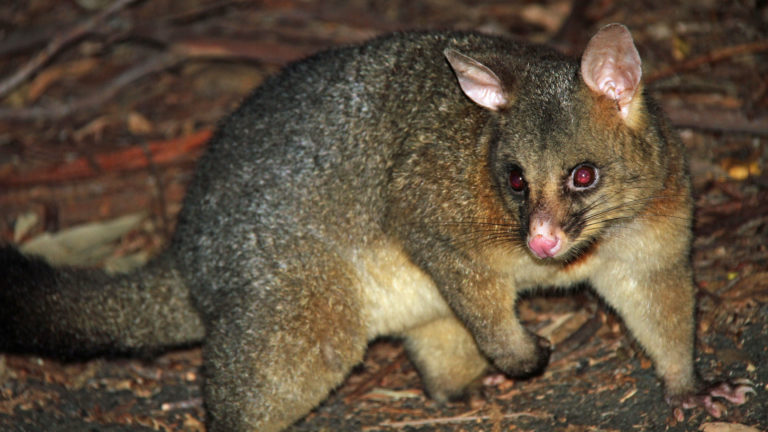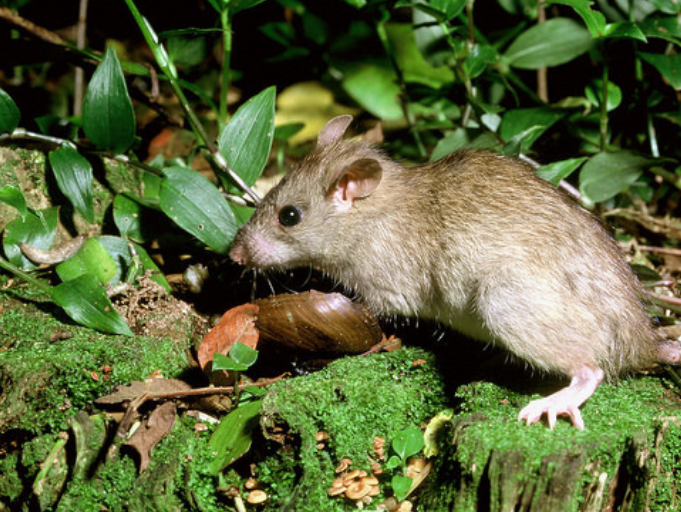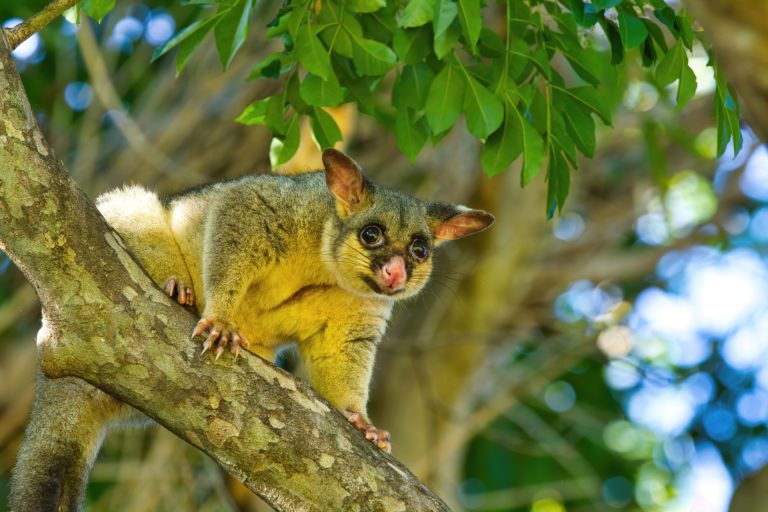Dual 1080 operations – would two toxin applications a few weeks apart work better than one? Possibly, if a few other conditions are also met.

Currently, aerial 1080 drops are used to control introduced predators, but not expected to totally eliminate them. Aerial 1080 application is used to knock predator numbers right down and give native species a breeding window, before predator numbers start to climb again.
Landcare Research scientists Graham Nugent, Grant Morriss and Bruce Warburton have been investigating whether there’s a way that 1080 operations can be carried out more effectively. Could 1080 be used to totally eradicate possums and perhaps even ship rats from the operation zone?
It could be a game-changer. So what needs to change? Pre-feeding, finding a way to counteract learned bait aversion and a dual bait application could be the key. The researchers explain:

“In 2016, New Zealand adopted two ambitious pest eradication goals. The agricultural sector and government committed to eradicating bovine tuberculosis (TB) from wildlife and livestock nationally by 2055 through a programme managed by OSPRI, while the conservation community and government aimed to eradicate three widespread ‘predators’ from the country by 2050. Both goals would be more achievable if introduced possums; the main wildlife host of TB and one of the targeted PF2050 pests could be quickly and affordably eliminated, especially from large areas of native forest where their numbers tend to be greatest. “
Such large-scale local elimination could be done already using aerial application of anticoagulant toxin (brodifacoum), but it has a long latent period. It accumulates in the environment and in non-target species and its use is restricted on public conservation land for those reasons.
“The only other aerially deliverable toxin currently available is sodium fluoroacetate (1080). It is already widely used to suppress possum and/or ship rat (Rattus rattus) densities in remote forest and/or mountain areas. However, 1080 is a comparatively fast-acting toxin (time-to onset of loss of appetite and subsequent sickness is typically 40–70 minutes for possums depending on dose), so at least a few possums usually survive 1080 baiting, either because they do not encounter bait at all, or (more usually nowadays), because they do not eat enough bait quickly enough to ingest a lethal dose before the onset of sub-lethal toxicosis.”
Not surprisingly, the survivors of a sub-lethal dose display a strong aversion to the bait used and that aversion can last more than 2 years.
“The risk of sub-lethal poisoning can be reduced by ensuring:
(i) all individual baits contain at least one lethal dose of 1080;
(ii) baits do not fragment during sowing;
(iii) bait density is high enough for every possum to quickly encounter multiple baits and
(iv) possums are familiar with the bait being used as a result of one or two previous exposures to non-toxic baits (pre-feeds).
“A large-bait/multiple-pre-feed/high-sowing-rate solution is almost always highly effective but is inevitably expensive and there is always some chance of possum survival; for example, when a dominant possum displaces a subordinate possum from a partly eaten bait (as has been observed with trail cameras), potentially resulting in the sub-lethal poisoning of both possums.”
“We explored whether possums and rats could be eliminated from large areas using pre-feeding and two applications of sodium fluoroacetate (1080) bait spaced a few months apart. The specific key question we investigated was whether any bait aversion learned by possums or rats that survived the first application of 1080 cereal bait would be overcome by a second application”.
Two applications of 1080, rather than one, is more expensive in the short-term, but there are savings to be made as well.
“If eradication of possums could be achieved in a single operation involving two applications of toxic 1080 bait just a few months apart (dual baiting), there could be far less need to repeat operations in order to guarantee local eradication of TB (simply because a 100% kill would result in instantaneous eradication of TB from resident possums). It would avoid any need for the expensive post-control possum TB surveillance usually required to verify TB eradication, and so could potentially enable treated areas to be declared free of TB in possums after just one 1080 operation rather than the usual three operations spaced approximately 4–6 years apart.”
If dual 1080 baiting can eradicate all possums, and if re-invasion can be prevented by perimeter control, it would also help make PF2050 goals of national eradication much more feasible with current tools.
“Although the funding (and therefore the focus) of this research relates primarily to possums, we also extended the investigation to cover ship rats, another of the predators targeted for eradication by 2050. Rats can be eliminated from large areas using aerial baiting but that has always relied on use of anticoagulants such as brodifacoum and, to our knowledge, has never been achieved via 1080 baiting.”
Less is known about rats and 1080. Rats weren’t specifically targeted with 1080 until the 1990s, much later than for possums, so the efficacy of 1080 for rat control has not been researched to the same extent.
“There are some similarities (most notably an even greater need for pre-feeding than for possums), but also differences (most notably, wide variation in control efficacy possibly related to seasonal timing and/or rat density).”
“In undertaking this research, we assumed that there will always be a risk of some possums and/or rats surviving a single 1080 baiting even if large robust baits, multiple prefeeds, and high sowing rates are used. Therefore, we focussed on whether most survivors of a first 1080 baiting would be killed by a second application of 1080 bait a few months later. Specifically, we field-tested the hypothesis that repeated pre-feeding of a recently poisoned area with a non-toxic bait would reverse any learned bait aversion induced by the first toxic 1080 baiting so that most survivors would then accept subsequent 1080 baits.”
In 2016 and 2017, a two-stage field trial was undertaken using 100-ha forested study blocks near New Creek, Westland.
“In the first stage, eight blocks were aerially baited with 1080 after being aerially pre-fed twice, once, or not at all. The relative abundance of rats fell to zero immediately after the baiting in all four blocks that were pre-fed, but lesser reductions in the four blocks not pre-fed. The survivors in the non-pre-fed blocks appeared to be universally and strongly bait averse. In the second stage, the non-pre-fed blocks were then aerially pre-fed twice and 1080-baited (by hand laying) with a bait type that differed slightly in appearance and smell from the original.”
Trail camera visitation rates and chew card interference were used to assess the relative abundance of ship rats and possums.
“The relative abundance of rats fell to zero or close to it in the second group of four blocks, whereas possum activity indices increased markedly after an initial one-week dip.”
A possum increase wasn’t what anyone was expecting. It seems that possums may be VERY fond of peanut butter and that was skewing results…

“The increase in possum activity was attributed to the peanut bait used in the chew cards attracting possums to monitoring sites. We conclude that dual application of 1080 using a similar bait in a single operation has the potential to locally eliminate rats from large areas, and that with further development involving use of two very different bait types and/or different pre-feeding sequencing, could potentially achieve the same for possums.”
“Although we were constrained (by aerial poisoning consent processes) to using a second bait that differed slightly from the initial bait, we found that the approach has promise, especially for rats and potentially for possums.”
So what do the findings mean for operational best practice?
“The control outcomes of the stage one setup phase of this study re-confirms the well-documented benefits of pre-feeding for achievement of high kills of possums and, even more so, of rats. These findings are already incorporated into operational best-practice guidelines. Control efficacy did not differ significantly between the once- and twice-prefed blocks after the first 1080 baiting, but that may simply reflect insufficient sampling effort to distinguish between a high kill and a very high kill, as pre-feeding once does not always result in near total kills of rats or possums.”
“The total reductions in CCI and total kill of radio-collared possums in the pre-fed blocks suggest that all or almost all possums in those blocks encountered and ate 1080 bait. That implies that all or nearly all possums and rats in the non-pre-fed blocks will have also encountered bait and eaten at least some of it, yet some survived, implying sub-lethal poisoning as a result of their consuming too little bait was the major contributor to their survival.”
As expected, those survivors were strongly bait averse.
“Survivors of both species were universally strongly bait averse, not only to the bait type used in the first baiting but also to the other three cereal-based bait types and also to carrot bait of similar size, at least when all bait types were presented together on a single occasion. We are unable to assess from this study whether the bait aversion was related to specific food characteristics (appearance, smell, taste, or texture) or to some generalised learned neophobia.”
Rats learnt quickly too.
“Our observation that almost all baits at the 19 sites visited by rats in the poisoned blocks remained completely untouched after 4 nights is a strong indication of learned aversion. The bait acceptance trials were undertaken about 8 weeks after the first 1080 baiting. The high degree of aversion demonstrated by rats at that time implies that most of the animals present then were survivors rather than post first baiting immigrants.”
After the second 1080 baiting, rat reductions were almost total, with very few camera-site visits for most of the 6 weeks after baiting.
“The few visits during and after that time were mostly close to the periphery of the poisoned areas, suggesting they were most likely to be invaders. The acceptance trial at 5–6 weeks later showed most of the population then were bait-averse survivors that we expect will have survived until the second baiting. If so, pre-feeding twice largely, or possibly completely, overcame any learned bait-specific aversion or induced generalised neophobia in surviving rats.”
Based on their findings, the researchers conclude that rapid-repeat dual 1080 baiting does have the potential to locally eliminate rats.
“If our first 1080 baiting had been pre-fed even just once, very few rats would have remained to be killed and previous research with possums suggests that as pre-fed survivors they would perhaps have been less strongly bait averse than those not pre-fed . We speculate that using only one pre-feed instead of two between the two toxic baitings may have been enough. In contrast, local elimination of possums appears unlikely to be achievable using dual 1080 baiting if some possums survive the first baiting with a learned bait aversion and if the second bait type is not sufficiently different from the first. Therefore, the best option currently available for achieving local elimination of possums with 1080 baiting appears to be multiple pre-feeds and a single sowing of 1080 bait at high sowing rates (2–5 kg per hectare) using large (>10 g) individually-lethal baits.”
Bait-averse possums may be able to be poisoned if a very different bait type is used for the second 1080 baiting.
“A peanut-butter-based bait would be one option (or use of baits even more attractive than peanut butter. As no bait type other than cereal is currently registered for aerial 1080 baiting, the second baiting might initially need to be conducted (as in this trial) with aerial pre-feeding, but hand-laying of the alternative 1080 bait type, which already has been demonstrated to be effective at operational scales. Another avenue of potential research could focus on determining whether pre-feed sequencing (e.g. pre-feeding with two different bait types ahead of the first 1080 baiting) can overcome the broad learned aversion exhibited by surviving possums after a first 1080 baiting.”
Overall, the possibilities look promising.
“We conclude that dual application of 1080, with both applications preceded by non-toxic pre-feeding using the same bait no more than a few months apart, has the potential to locally eliminate rats from large areas, and that, with further development involving the use of two very different bait types and/or different pre-feed sequencing, it could potentially achieve the same for possums.”
The full research paper is published in the New Zealand Journal of Ecology and is freely available to download.
Attempting local elimination of possums (and rats) using dual aerial 1080 baiting (2019)

